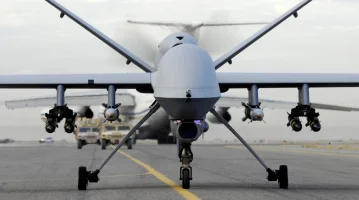- Views: 2K
- Replies: 8
India's indigenous military aviation capabilities are poised for a significant advancement as Hindustan Aeronautics Limited (HAL) awaits government approval for its ambitious project to develop a stealthy High Altitude Long Endurance (HALE) unmanned aerial vehicle (UAV).
Sources indicate that the Indian Air Force (IAF) and the Ministry of Defence are expected to soon authorize the programme, which aims to equip the armed forces with a sophisticated platform for strategic surveillance and precision strike missions.
The proposed unmanned aircraft, powered by a turbojet engine, is designed to operate at considerable altitudes for extended periods. This capability will significantly enhance the IAF's capacity for intelligence gathering, surveillance, and reconnaissance (ISR) over wide areas.
Furthermore, the IAF has shown strong interest in a combat-capable variant, an Unmanned Combat Aerial Vehicle (UCAV), derived from the same platform.
This UCAV version is planned to include an internal weapons bay, allowing it to discreetly conduct precise attacks on targets across borders, minimising its detection by enemy radar and heat-seeking sensors. Such HALE UAVs are increasingly vital in modern warfare, offering persistent monitoring and rapid response options.
It is understood that HAL's design for this advanced UAV incorporates features inspired by established international platforms such as the General Atomics MQ-20 Avenger, a notable stealth UAV recognised for its advanced performance.
Key elements contributing to the Indian UAV's stealth characteristics reportedly include the internal carriage of weapons and a specially designed S-shaped engine exhaust.
These features are engineered to reduce the aircraft's radar visibility and heat signature, thereby making it more difficult for adversary air defence systems to detect and engage. These attributes are crucial for operating effectively in heavily defended airspace, meeting the IAF's need for a versatile and survivable aerial system.
The emphasis on an internal weapons bay is a common feature in modern stealth aircraft, as externally mounted munitions can significantly increase an aircraft's radar cross-section.
HAL has reportedly proposed a proactive development schedule for the HALE UAV programme. According to sources familiar with the proposal, the public-sector aerospace company aims to begin testing a prototype within five years once the project receives the official go-ahead. Following this initial phase, an additional four to five years would be dedicated to comprehensive developmental trials and securing the necessary clearances for series production.
While this represents a challenging timeframe for such a complex system, it reflects HAL's confidence in its technological expertise and existing infrastructure to deliver a platform that meets global standards.
The successful development of this stealth HALE UAV and its armed UCAV counterpart will represent a major stride in bolstering India’s self-sufficiency in critical defence technologies.
The aircraft's capacity to fly at high altitudes for long durations, combined with its low-observability features, is expected to provide the IAF with a distinct strategic advantage in monitoring activities and responding to potential threats along India’s extensive borders.
The UCAV variant, specifically, will significantly augment India’s offensive military power, enabling targeted, low-detection strikes against high-priority enemy assets.





